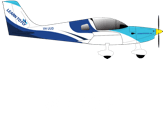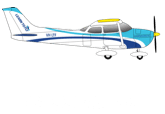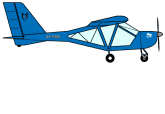The Commercial Pilot Licence (CPL) course sees you progress through RPL and PPL syllabus before moving onto CPL theory and practical training, and then hour building as you accumulate at least 150 flying hours. The cost will vary based on the aircraft that you choose to fly in during your training, and there are specific aircraft requirements for CPL that may mean you need to change aircraft when you start the CPL syllabus.
The most economical way to obtain a CPL is with our CPL flight package. The package includes all of the required theory and practical aircraft training, and minimum flying hours, and also makes use of our state-of-the-art simulators to keep costs down.
Note that there are ancillary items that are not included in the package that you will incur during your training, such as landing fees at other aerodromes. Many students end up flying more than the minimum hours before they take their CPL flight test, so that also needs to be considered. You may wish to add in multi-engine training as well. Example CPL packages prices are listed below.
CPL package flying in a Diamond DA40 $77,995
Add in multi-engine training in a Diamond DA42 $83,135
To view current pricing, aircraft options and packages, please download the Commercial Pilot Licence course guide. If you already hold a PPL and just want to complete the CPL syllabus on its own, please chat with one of our flight training specialists.
In Australia, to start the Private Pilot Licence (PPL) training, you’ll first need to finish the Recreational Pilot Licence (RPL) training syllabus. So, to determine the total cost of obtaining your PPL you will also need to factor in that training. The overall cost will also depend on what aircraft you choose to fly during your training.
Some cost examples are below, based on our flight package pricing. These packages can be split into interest-free monthly instalments via SplitIt. Note that there are some ancillary items not included in the flight package, such as landing fees at different airports. We also have Pay As You Fly options available.
To view current pricing, aircraft options, package inclusions and all payment options, please download the Recreational Pilot Licence and Private Pilot Licence course guides.
Please see the following procedures:
- Make sure your PPL or CPL is from an ICAO- approved country.
- Apply for an ARN with CASA
- Obtain an Australian CASA medical certificate
- Hold or pass an English Language Proficiency assessment
- Apply for an ASIC
- Fill out CASA form 61-4A
- For PPL – A flight review must be completed to make your PPL valid
- For a CPL – You will have to sit two CPL theory exams and a flight test. After completion, you will then submit CASA form 61-4B
If you are an International Student on a student visa you are permitted to work 20 hours a week. For full visa conditions please visit https://www.homeaffairs.gov.au/ or contact a registered migration agent.
Yes, we do. We provide a 210 hours DGCA syllabus for Indian students. It includes 15 hours of multi-engine training, 5 hours of Pilot In Command time at night and 40 hours of instrument time. This means that you can easily convert your CASA CPL to the DGCA CPL licence back in India.
All of our pricing is identical between domestic and international students. International students may be required to pay additional fees to obtain a Student Visa where applicable.
We do hire our students including international students and have flight instructors who are employed in their first flying job. We are committed to the development of future pilots and transitioning them into pilot careers once they hold the required licences. We also offer Pilot Job Guarantee Program, contact us to get more information.
Learn to Fly has insurance cover for the following:
- $5 million Liability Insurance which covers all of our flying operations.
- $15 million Hangar Keeper’s Liability Insurance which covers all ground operations including incidents and accidents happening within the school and on the apron.
Students and Trial Introductory Flight customers should contact their insurance provider for advice on any personal insurance cover they may wish to take out for their flight or flight training.
It’s best to be critical and demanding in regards to your flight training to ensure you are getting the most value from your time and money. There are a few warning signs you can lookout for to ensure your training is unfolding the way it should. Things to watch out for include:
- Constant rescheduling or cancellation of lessons not due to weather
- Failure to provide proper briefings
- Constant changes of Instructor
- Inconsistency within the school
- Limited or no time with senior pilots
- No proper debriefing
- Poor paperwork
Check out our blogs on 8 Ways To Maximise Your Flight Training and The Most Common Student Pilot Mistakes for some extra tips.
There is a certain amount of risk in everything we do. Flying an aircraft has some degree of risk, and for that reason, they must be treated with care and respect. If you learn to fly safely with experienced and professional instructors then you will go a long way towards reducing that risk. Your safety and that of the aircraft and its occupants is the most important objective for our instructors. All of our aircraft are maintained to the highest Australian Civil Aviation Safety Authority (CASA) standards. Statistically, flying is actually safer than driving a car on the road!
Airsickness is completely dependant on the individual. Some people will have a tendency to feel airsick initially, but as time passes and you feel more confident in the aircraft the chance of feeling sick is significantly reduced. If you have previously suffered motion sickness it’s best to let your instructor know.


